History of Alcohol in America
In Party Like a President: True Tales of Inebriation, Lechery and Mischief in the Oval Office, journalist Brian Abrams writes that alcohol has been one of the defining factors in the cultural, historical, and political development of the United States. From the Mayflower bearing barrels of beer to Plymouth Rock in 1620, to Barack Obama convening a “beer summit” in 2009, the history of alcohol in America charts how the country itself has grown and changed around the consumption, regulation, and the very presence of liquor.
Alcohol and the American Spirit
Abram’s book chronicles the “huge role” that alcohol has played in the Oval Office, even before there was an Oval Office. When fighting the British for independence, General George Washington solicited support from the French, writing to French generals to discuss their favorite wines. During the Civil War, another major turning point in America’s story, the Union Army was partially funded by two tax increases spurred by General Ulysses S. Grant, who became the most celebrated general of the War, and served two terms as President of the United States.
But even outside the White House, America’s alcohol story is an ever-evolving crossroads of religion, science, psychology, socioeconomics, and law and order. In America, alcohol exists simultaneously as a hallowed rite of passage into adulthood, a necessary evil, and a venerable institution of entrepreneurial freedom. Various attempts to end its production, control its distribution and market its profitability have defined entire eras and generations of the American psyche.
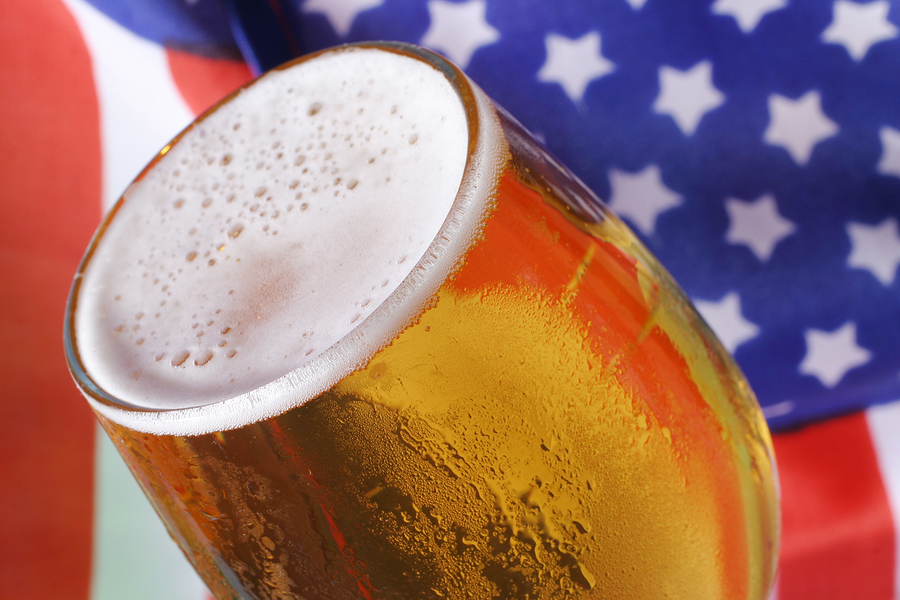
The Effects of Ardent Spirits
Alcohol has always been a contentious topic of discourse, stretching as far back as 1805. Benjamin Rush – one of the Founding Fathers of the United States, a signatory of the Declaration of Independence, and a man hailed as “the father of American psychiatry” for his groundbreaking claim that mental illness was a condition of the mind, not the soul – published a document that identified chemical properties within alcohol that caused a drinker to behave inappropriately (and compelled further consumption of alcohol), rather than the fault lying purely with the drinker. Rush put forward that alcoholism is a medical disease and argued that treatment involved weaning alcoholics off their drinks, as opposed to subjecting them to more potent substances.
Rush’s document, entitled An Inquiry into the Effects of Ardent Spirits Upon the Human Body and Mind, caused a stir in the country not even three decades old by the time it was published. Not only was Rush challenging the conventional view that alcoholism was the result of demonic possession, his claim that alcohol itself was capable of inducing self-destructive behaviors went against the proverbial and historical grain; the majority of the American colonists drank regularly, and the Whiskey Rebellion of 1791 – where farmers rebelled against the imposition of a federal tax on distilled spirits – was still fresh in memory.
But Rush’s esteemed standing in American politics and science swayed many to his side of the argument and was the catalyst for the minority temperance movement to take the spotlight. The American Journal of Public Health writes that there had been anti-alcohol groups and clubs (both formal and informal) that viewed liquor as the primary cause for a number of social ills and a deleterious presence in the public sphere. However, such groups existed on the fringes. Rush’s work in educating the masses about the risks of alcohol gave perceived legitimacy to what had once been an easily dismissed and mocked notion.
Prohibition
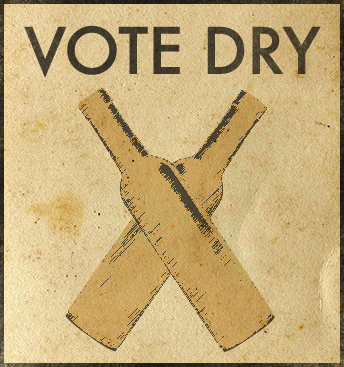
Ironically, such a perspective ran contrary to Rush’s own views on the subject; he felt that moderate consumption of alcohol, coupled with regulation (like the failed whiskey tax) and better treatment methods, would ensure that alcohol could be responsibly enjoyed. Nonetheless, the damage was done; by the late 1800s, fueled by the righteous fire of religious revivals that predicted the impending dawn of the 20th century would herald the end times, American citizens began turning away from their drinks, to the point of pledging complete abstinence.
The 1900s didn’t bring the end of the world, but it did give rise to groups like the Anti-Saloon League. The movement to close saloons was founded in 1893, but it was in the early 20th century that the group spearheaded the growing chorus of voices calling for an end to alcohol in America. Using lobbying and the print media, the Anti-Saloon League’s moral crusade to end the production, distribution, and consumption of alcohol enforced existing temperance laws, but also added new ones to the books. Churches were fully on board with the program, which led to politicians taking notice. In 1919, the tide was so strong that Congress ratified the 18th Amendment to the Constitution, the culmination of the movement that came to be known as Prohibition, which went into effect the following year.
Prohibition was everything the temperance movement had wanted – regulation of manufacturing, transporting, and selling alcohol across all 48 states (Alaska and Hawaii had not yet joined the Union). The Amendment did not affect private consumption of personal stocks of alcohol, wine used for church services, and medicinal liquor; but for the most part, the temperance movement had succeeded in banishing alcohol from the public sphere. Such was the extent of the victory that President Herbert Hoover commented that the 18th Amendment – and the Prohibition movement behind it – was “a great social and economic experiment,” one that was “noble in motive, and far-reaching in purpose.”
Opening Pandora’s Box
Prohibition, as the 18th Amendment came to be known, had an immediate effect: a reduction in the rate of alcohol-related crime that seemed to validate the law, and the belief that it would usher in an enlightened golden age of morality, civil peace, and public health. However, the other effect of the ban was that it also created opportunities all over the country for organized crime rings to go into a new line of work. In Atlantic City, mobsters raucously celebrated the passage of the 18th Amendment, knowing it virtually guaranteed them a stake in a very lucrative black market. In Florida, federal agents engaged in violent gunfights with bootleggers and smugglers, while local police and politicians were regular customers at smoky speakeasies.
Law enforcement’s uneasy relationship with Prohibition (the Orlando Sentinel refers to it as the “double standard”) also speaks to another
problem with the 18th Amendment: Despite the support the ban received from the Anti-Saloon League and other groups in the temperance movement, it was almost universally unpopular among most Americans. Supporters of Prohibition promised that other industries would boom in the wake of alcohol being taken off the market; not only did this not come to pass, it spectacularly backfired.
Unable to make a profit without legal sales of liquor, theaters and restaurants lost revenue hand over fist. Breweries, saloons, and distilleries closed down, which led to a spiral of unemployment, as barrel makers, truck drivers, and waiters all found themselves without work.
Bathtub Gin
Prohibition even struck at the business of the government. Before the passage of the 18th Amendment, states’ budgets depended heavily on the excise taxes on sales of liquor. In New York, for example, taxes on alcohol contributed to almost 75 percent of the state’s revenue. But then came Prohibition, and with no alcohol to tax, coffers dried up. A PBS documentary estimates that the 18th Amendment cost the federal government $11 billion in tax revenue, ($198.61 billion in 2016, adjusting for inflation), while also costing the government $300 million to simply enforce it. As a way of compensating for the loss, many state governments, and the federal government, started using income tax revenue to fund their respective budgets.
Some people got creative. Since the 18th Amendment permitted the sale of whiskey by prescription for medicinal purposes, the number of registered pharmacists in New York increased threefold. Similarly, the allowance for wine to be used in religious services saw an uptick in church and synagogue membership.
Even the American grape industry got in on the act, selling kits of juice concentrate with a warning that leaving the concentrate too long would cause the juice to ferment and turn into wine. People could easily purchase the equipment for making a home distillery from a hardware store, and public libraries offered manuals on distilling. The same law that was intended to make Americans stop drinking turned Americans into experts on creating alcohol.
However, one of the unexpected side effects of this creativity was that the quality of the alcohol was degraded by the use of cheap, rudimentary and dangerous chemicals and equipment. In the 13 years of Prohibition, an average of 1,000 Americans died every year from consuming tainted alcohol, which came to be known as “bathtub gin” as a sign of how people traded in health and safety for the luxury of enjoying an illicit drink.
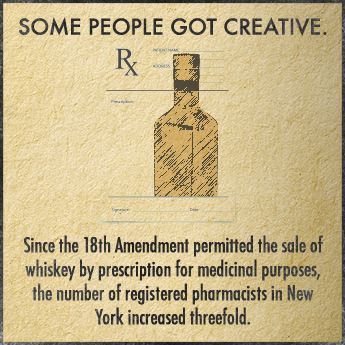
The Colossal Scale of Failure
Organized crime had the black market in its pocket, taxes were up, morale was down, and the “noble experiment” was looking more and more like a national failure. One of the most influential advocates of Prohibition was John D. Rockefeller, Jr., who donated $70,000 of his own money to the Anti-Saloon League. A lifelong abstainer from alcohol, Rockefeller publicly withdrew his support from Prohibition, claiming in a letter to The New York Times that drinking rates were up, lawbreakers were making money (“on a colossal scale”), and that some of the best citizens of the United States were blatantly disregarding the 18th Amendment. Prohibition, wrote Rockefeller, eroded the respect for law enforcement and led to an “unprecedented degree” of increase in crime rates.
Without support from people like John D. Rockefeller, Jr., the soul of the Prohibition movement was sapped. As the Democratic party’s presidential candidate for the 1932 elections, Franklin D. Roosevelt campaigned on a platform to overturn the 18th Amendment. Even led by Herbert Hoover, who had championed “the noble experiment,” the Republican party had largely turned its back on Prohibition.
The election results spoke to what the attempt to ban alcohol had done to the United States. Roosevelt won 42 states to Hoover’s six, earning 57.4 percent of the popular vote, while his Republican opponent claimed only 39.7 percent. It was, at the time, one of the most comprehensive presidential victories in American history.
Roosevelt made good on his promise to end Prohibition. Two months after his inauguration, and eight months before Prohibition was officially annulled, he signed legislation that loosened the legal definition of alcoholic beverages.
As he signed the legislation, Roosevelt famously said, “I think this would be a good time for a beer.” Americans all over the country agreed and still do to this day. History remembers Prohibition as the least loved Amendment, and the only Amendment to be repealed.
In 1933, Congress passed the 21st Amendment, which explicitly and officially repealed the 18th Amendment, thereby allowing alcohol to be manufactured, distributed, and sold in the United States.
Surviving and Thriving after Prohibition
Prohibition may have died an ignominious death, but America’s love-hate relationship with alcohol has continued to define many elements of what it means to be American, from the nominally illegal beer distilleries in the Appalachian mountains to the counties scattered across the Bible belt that are steadfastly (and proudly) dry.
When manufacturing alcohol was still illegal, many people resorted to cooking up barrels of booze under cover of darkness or “by the shine of the moon,” which gave rise to the term “moonshine.” The term is still used today to describe alcohol that is made and sold outside the law.
The Appalachian State University’s Department of Anthropology explains that the practice of moonshining goes back a long way in the remote and rural areas of the general Appalachian region, including (but not limited to):
- Alabama
- West Virginia
- Georgia
- Kentucky
- Mississippi
- North Carolina
- South Carolina
- Tennessee
- Virginia
- Pennsylvania
Perhaps burned by the failure of the large-scale logging and coal mining industries to spur economic growth, the people of Appalachia banded together to do things their own way. Moonshining was a key source of income for many generations of local families, most of whom were descended from Scottish-Irish immigrants, who brought with them a strong drinking culture and traditions of home-brewing whiskey. As the rest of the United States experienced an economic boom following victory in World War II, the Appalachians remained distant and forgotten, and people came together over the one thing that the far-away federal government couldn’t touch – their custom of making home-brewed alcohol.
The Culture of Moonshine
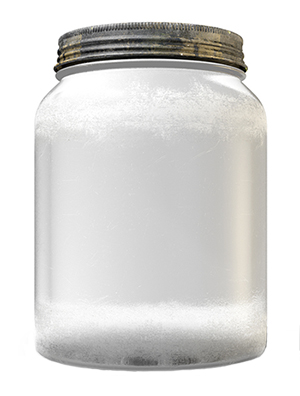
That way of life persists today. In 2014, NPR wrote that “making moonshine at home is on the rise.” The interest is partly fueled by the Discovery reality TV series Moonshiners, which depicts the daily life and adventures of a group of real-life moonshiners in the Appalachian Mountains, across the Carolinas, Tennessee, and Virginia. While the series is dramatized – the Virginia Department of Alcoholic Beverage Control said that the program shows nothing illegal – the popularity speaks to the culture of snubbing law enforcement and celebrating the peculiar influence alcohol has had on this brand of Americana. One of the show’s stars was arrested in 2007 by agents from the Bureau of Alcohol, Tobacco and Firearms for illegally distilling liquor (and possessing a handgun as a convicted felon). He committed suicide before his jail term was to start, an action his daughter attributed to her father’s fierce devotion to the idea of independence – one that goes a long way in explaining why the culture of moonshine exists among the Appalachians.
Rice and Bread Magazine writes that making moonshine “is a way of life and part of [the] culture” for many people. In poor communities, where money is not easily made, the laws on alcohol meant little; regardless of constitutional Amendments, brewing whiskey is a family tradition.
Jamie Joyce, the author of Moonshine: A Cultural History of America’s Infamous Liquor, agrees, saying that the practice represents a defiance of big government and the long arm of the law. The refusal to pay taxes, and earning money for the family in the face of poor harvests and declining job prospects, is quintessentially American.
Alcohol and the American Spirit in the Modern Day
There is no law against private citizens making their own alcohol, but the US government takes a hard line against the kind of liquor manufactured in illegal distilleries, primarily because such environments do not have any kind of health and safety standards. “A homemade still,” writes Slate magazine, “might consist of car radiators or pipes,” which can cause lead poisoning. A study in the Annals of Emergency Medicine reported that the amount of lead in the bloodstream of more than 50 percent of moonshine drinkers met the criteria for a “level of concern,” in the opinion of the Centers for Disease Control.
The Alcohol and Tobacco Tax and Trade Bureau warns that making spirits at home for the purpose of consumption and/or distribution is a felony. Beer and wine are allowed, but private citizens need to pay taxes and file appropriate paperwork to operate a distilled spirits plant.
But whether as a holdover from the dogged resistance to Prohibition or the powerful belief in independence from the federal government that characterizes much of rural America, filing paperwork has never been a strong impediment for people who want to do things their own way.
Big Alcohol and Big Business
Money was a big motivator in Prohibition being repealed, and money continues to influence alcohol’s place in American culture, society, and history. The quixotic practice of moonshining among the Appalachians has not gone unnoticed. State governments have realized that the best way to control an otherwise undesirable situation is to incentivize it. In 2010, for example, Tennessee became the first state to regulate moonshining, starting what CNN calls “the new golden age of outlaw liquor.” Big names like Jim Beam and Jack Daniels have gotten into the moonshine business, and Nascar racing teams are sponsored by moonshine distilleries.
The effect of the mainstreaming of brewing illicit whiskey is that the black market is losing its market, which would satisfy the state governments and law enforcement agencies. But CNN writes that “there will always be purists,” who shun big corporations making money – such as Walmart, which sells one brand of legal moonshine unironically named “Freedom Moonshine” – with the same disdain as they shun the federal government telling them what they can and can’t make. The same spirit of defiance that has run through American history will likely keep the culture of a do-it-yourself approach to making whiskey last for a very long time.
The Year of Alcohol
Whether it is brewed in hidden distilleries in the countryside or served by the shot glass in a bar, alcohol is here to stay. When a Gallup poll found that over 66 percent of Americans consume alcohol, having as many as four drinks a week, the company wrote that the practice of drinking is “commonplace” in the United States. In 2014, Bloomberg Businessweek noted that spending on alcohol grew every quarter for the previous four years. And in 2011, Forbes notes that beer, wine, and liquor stores were growing at a rapid rate, likely due to consumer confidence returning after the Great Recession, calling 2011 “The Year of Alcohol.”
American culture has also changed in response to the flow of alcohol becoming ever stronger. The shrinking gender gap since the 1970s has seen more women assume positions of leadership and social parity with their male counterparts, even in terms of drinking. The Fix writes that there is now much less of a stigma over women drinking than there has ever been in the past.
Put another way, “American women are drinking more like men,” in the words of Newser. Historically, men always drank more than women, but the National Institute of Health writes that drinking patterns among women were closely aligning with those of men.
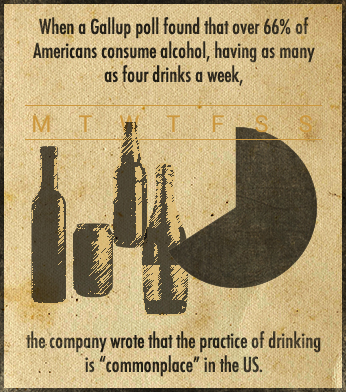
And women are getting some help. Not only do they have increased access to alcohol than they ever did before, women are also exclusively catered to by the advertising industry, which has increased alcohol advertising by more than 400 percent between 1971 and 2011. Many of those ads are targeted at women, sometimes going so far as to influence what types of beverages the female demographic tends to consume.
Even during difficult economic times, alcohol is the one thing that most Americans turn to, often to help them cope. An alcohol industry analyst for Standard & Poor’s tells CNN that when finances are tight, Americans will certainly buy less alcohol and drink at home as opposed to going out to bars, clubs, or restaurants. “But people will continue to drink, regardless,” he says.
Another analyst notes that alcohol purchase and consumption rates remained healthy (if somewhat diminished) during the Great Recession, concluding that having access to alcohol is a fundamental need for most Americans, on par with having access to medical care.
Who Drives the Alcohol Industry?
Alcohol is so deeply woven into the national fabric that any suggestion of taking it off the table, Prohibition-style, would be laughed out of the room. Simply put, there is far too much money to be made. The Distilled Spirits Council of the United States explains that in one year alone (2010), the alcohol industry was behind more than $400 billion in economic activity and generated $90 billion in wages from 3.9 million jobs. In that same year, state and local budgets received $21 billion from the manufacturing, transportation, and distribution of alcohol.
Alcohol is here to stay in America, but it brings with it a double-edged sword. For all the money and odes written to America’s deep relationship with alcohol, the single biggest group of consumers of alcohol in America consists of alcoholics (who “drive the alcohol industry,” in the words of Gawker). The Washington Post writes that 10 percent of the drinkers across America consume more than half the alcohol that the rest of the country drinks, in just one year.
The Centers for Disease Control write that alcohol-related deaths are the third most preventable cause of death in America, claiming 88,000 lives every year (behind smoking and health conditions related to obesity). In 2012, it was estimated that at least 17 million adults, and 855,000 adolescents, were dependent on alcohol. That same year, the number of deaths due to alcohol-related circumstances topped out at 10,322. Another CDC report found that alcohol abuse can take 30 years off a person’s life.
Perhaps most tragically, more than 10 percent of American children live with a parent who is dependent on alcohol.
Alcohol in America
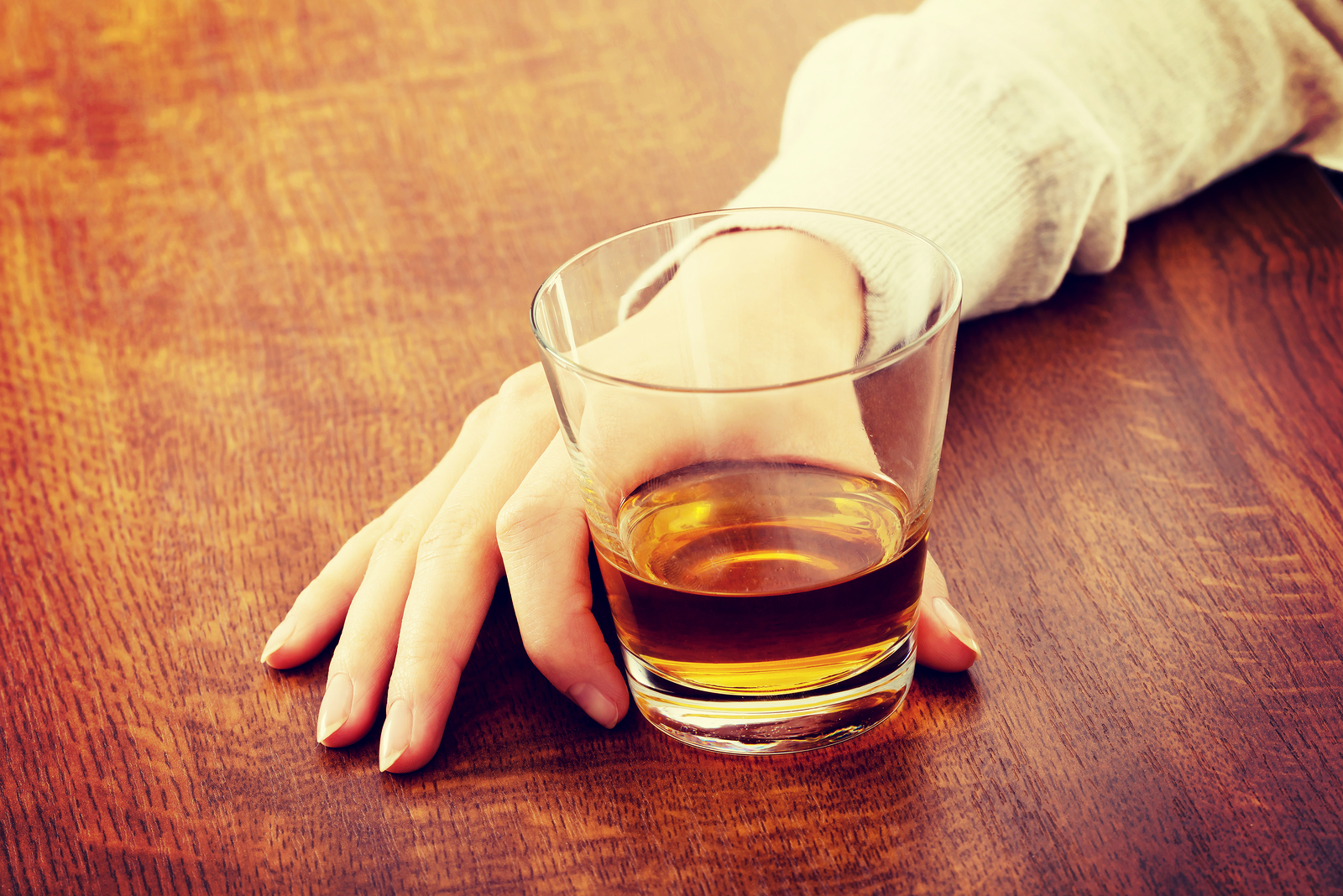
For better and for worse, alcohol is an intrinsic part of America. It played a role in the foundation of the New World, in the colonies’ fight for independence, and through some of the most tumultuous and celebratory moments in the history of the proverbial shining city on the hill. For many Americans, alcohol is a rite of passage to adulthood, especially on college campuses. For others, it is a social lubricant, a way to relax with friends and connect with romantic and sexual partners. And for too many, it is an escape from depression, stress, or trauma.
How the American people have responded to alcohol – either through a puritan shunning or with open arms (and an open wallet) – has defined so many different cultures and eras across the country. Whether it is throwing back a beer at a baseball game or brewing dangerously high proof whiskey in a shack in the mountains, the history of alcohol itself is, in some ways, the history of America.
